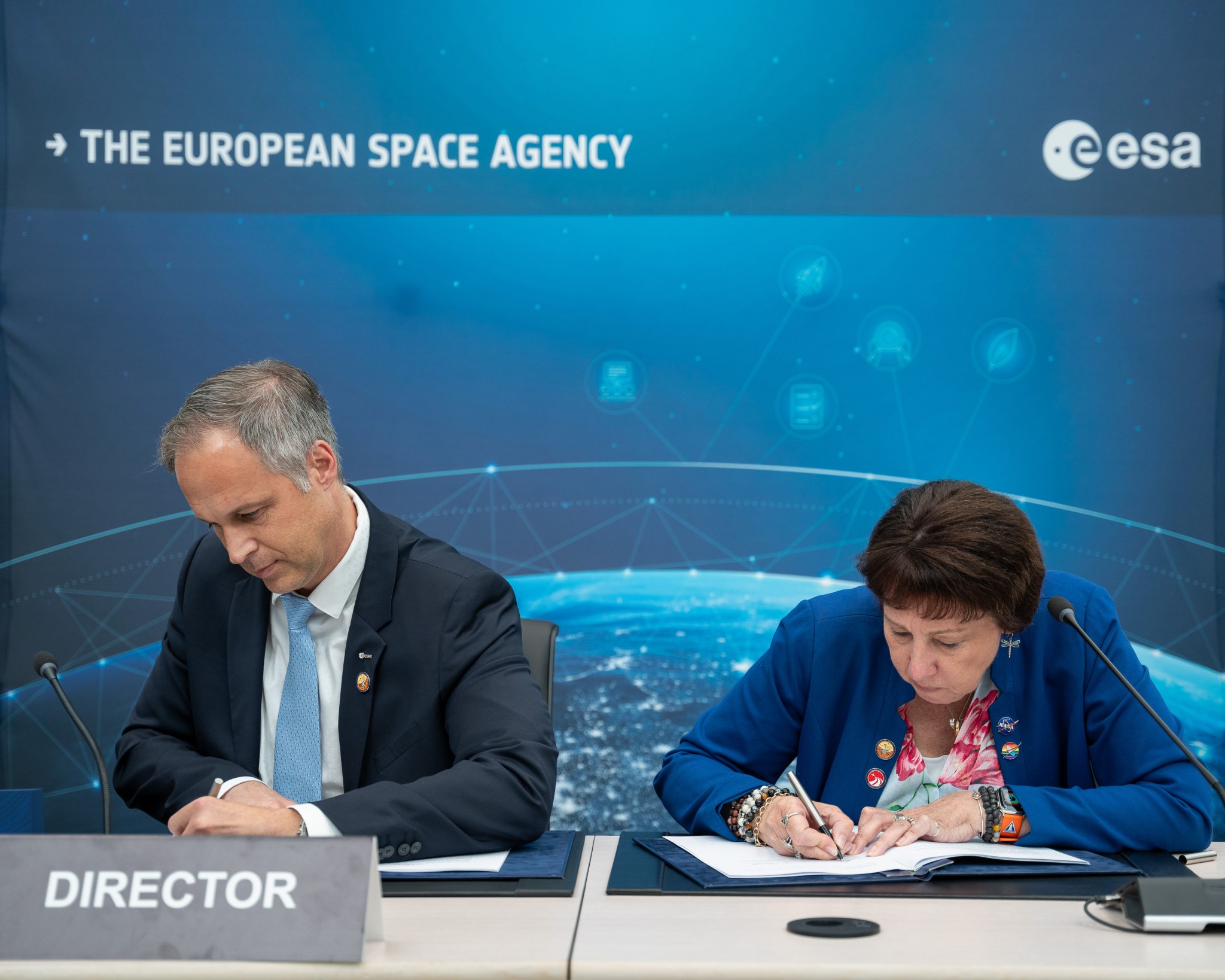NASA and ESA (European Space Agency) announced Thursday they signed an agreement to expand NASA’s work on the ExoMars Rosalind Franklin rover, an ESA-led mission launching in 2028 that will search for signs of ancient life on the Red Planet.
With this memorandum of understanding, the NASA Launch Services Program will procure a U.S. commercial launch provider for the Rosalind Franklin rover. The agency will also provide heater units and elements of the propulsion system needed to land on Mars. A new instrument on the rover will be the first drill to a depth of up to 6.5 feet (2 meters) deep below the surface to collect ice samples that have been protected from surface radiation and extreme temperatures.
“The Rosalind Franklin rover’s unique drilling capabilities and onboard samples laboratory have outstanding scientific value for humanity’s search for evidence of past life on Mars,” said Nicola Fox, associate administrator, Science Mission Directorate at NASA Headquarters in Washington. “NASA supports the Rosalind Franklin mission to continue the strong partnership between the United States and Europe to explore the unknown in our solar system and beyond.”
Through an existing, separate partnership with the German Aerospace Center (DLR) and the French space agency CNES (Centre National d’Etudes Spatiales), NASA is contributing key components to the Rosalind Franklin rover’s primary science instrument, the Mars Organic Molecule Analyzer, that will search for the building blocks of life in the soil samples.
NASA has a longstanding partnership with the Department of Energy to use radioisotope power sources on the agency’s space missions and will be partnering again with the Energy Department for the use of lightweight radioisotope heater units for the rover.
The Rosalind Franklin rover mission complements the Mars Sample Return multi-mission campaign led by both agencies.
For more information on NASA’s research on Mars, visit:
-end-
Katherine Rohloff
Headquarters, Washington
202-358-1600
katherine.a.rohloff@nasa.gov




